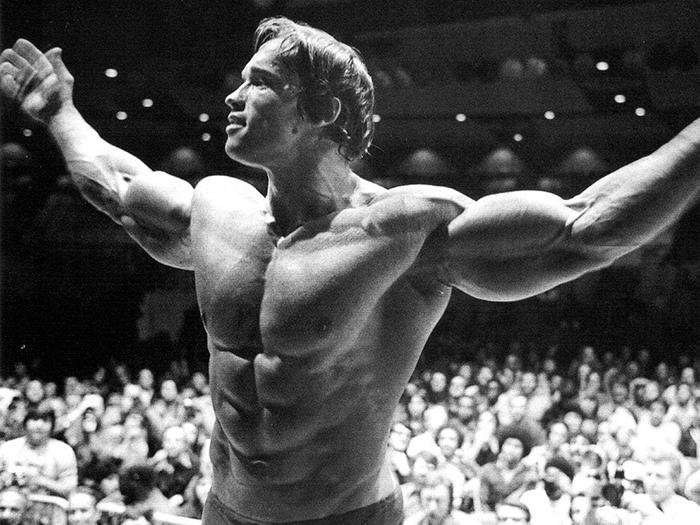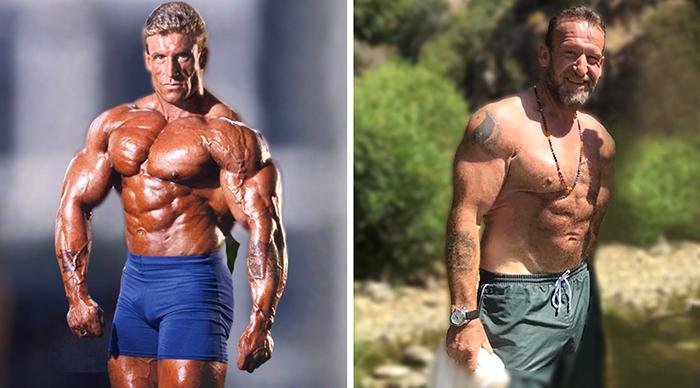How to train most effectively and without spending too much time?
This is one of the problems that ordinary people want to exercise to stay healthy, but even star sports athletes who have done this for a long time also want to know this.
An issue that is no longer a new one but has always been a headache for many gyms. Most of us try to build as much muscle as possible, and we all know that heavyweight exercise helps build muscle.
There are many different types of workouts available today, and maybe this might work for you but not for others.
However, there is a common mechanism, and we need to follow the laws of nature or the human body. That is, after exercising, we need a reasonable rest for the best muscle development.

If you do too little, training will not stimulate the muscles enough. If you do too much exercise, it will overload the muscles like a labor photo activity, not exercise anymore.
This article will find out how much exercise time and rest time is right and choose a certain schedule and rest period for yourself.
You may not find your training schedule for the first time, but give it a try and a workout schedule and feel for yourself what you will find.
However, very few people know how many days a week they need to exercise or how long a training session should be enough. To answer this question, you need to understand muscle building and the laws of recovery.
1. The Law of Muscle Recovery (Recovery)
In the early years of the bodybuilding movement, people often applied the full-body workout method.
During this period, the most common exercise schedule is 3 workouts a week, on days 2, 4, 6, or 3, 5, 7.
This exercise will help the practitioner stimulate all the muscles 3 times per week, and Each training session will last about 2 hours with 3 training days and 4 days off.
In the 1960s, bodybuilders discovered that they could be more effective at focusing on one or two muscle groups instead of exercising the entire body in one workout.
Since then, the muscle group division training textbooks were born, in the era of Arnold Schwarzenegger in the 1970s, he used a double split schedule.

Athletes at this stage can do chest and morning exercises and back exercises in the afternoon or evening.
This practice helps them train the entire body for 3 days 2 times a week, i.e., 6 days, 2 times a day, and rest on the 7th of the week.
With each training session lasting 1 to 2 hours, some people are as productive with this tight schedule as Arnold, while others do not.
And the first person to try this exercise program was Arthur Jones, who invented Nautilus's famous brand.
Jones has spent a lot of time researching the topic of muscle building throughout his life.
He explained that exercise would help build muscle, but it only grows when given enough time to recover, accompanied by nutrition and sleep. If the exercise session is too long, it cannot stimulate muscle growth.
Jones's famous quote is: “You can train hard, or you can train long, but you can't do both.”
2. Training method of fitness legend Dorian Yates
Most bodybuilders will opt for a 5 to 6 day a week exercise program with 2 muscle groups. However, Dorian Yates was the exception, and he won six Mr.Olympia championships in his prime.
Dorian inherited the knowledge from Arthur Jones and Mike Mentzer (famous for his Heavy Duty program inspired by Jones) and then adjusted it to suit himself.
He only trained 4 days a week, and each muscle group only exercised once, very little compared to other athletes at the time.

Specifically, he will train on Monday, Tuesday, Thursday, and Friday warm up a few sets before, train to the point of failure, and then try to overcome.
He named this practice method Blood and Guts, and it became legendary.
Dorian has set a new standard for muscle shock, which he believes sets him apart from his competitors.
Below is the training schedule that he used; this is for reference only, should not apply if you are not an expert.
- Monday: Delts, traps, triceps, abs (Shoulder, hind arms, belly)
- Tuesday: Back, rear delts, lower back (back, back shoulder, lower back)
- Thursday: Chest, biceps, abs (chest, front arm, abdomen)
- Friday: Quadriceps, hamstrings, calves (hamstrings, hamstrings, calves)
His training sessions usually occur within the returning hour, and he also spends 3 complete days off per week. Although there are many opinions that he practices too little, those who practice for longer cannot beat him.
This proves that hard training needs to go hand in hand with more recovery time.
Read more: 3000 calorie meal plan to gain muscle.
3. Muscle recovery and central nervous system restoration
A popular regimen that many people use is a 6-day-weekly schedule with one muscle group per day.
For example, if you do chest exercises on a Monday and back on a Tuesday, your chest will recover until you do chest exercises or chest related exercises like dips or arm exercises after the close-grip bench press.

However, this view is mistaken that no matter what muscle group you exercise, the body's central nervous system is still under stress.
Your central nervous system consists of the brain and spinal cord, where sensory impulses are transmitted, and motor impulses travel out.
You can understand that the mind controls the body; although your muscles can be restored if the nervous system is exhausted, your training will only lead to overload.
3. Overload in the gym
Overtraining is something that many people think does not happen when just enough sleep.
However, if you need to sleep, it's straightforward; for heavy training sessions, the body will need to be provided with adequate nutrition, reasonable rest, and 8 hours of sleep per day.
How do I know if you're overwhelmed in training? The most common symptoms are insomnia, interrupted sleep, decreased exercise performance, loss of appetite, and increased long-term injuries.
In particular, you may feel a loss of motivation to exercise; eventually, if this condition persists, you will lose both muscle size and strength.
4. How much exercise is enough?
Based on your metabolism and lifestyle
It can be said that the younger your age and the less you work, the more you practice. Besides, people who have practiced for a long time in other sports need to train harder than sedentary muscles to develop muscle.
A 21-year-old student who can eat 5 to 6 meals a day with plenty of rest will recover muscles better than a middle-aged man in his forties who has to work 50 hours a week and only have 6 hours to sleep every day.
 .
.
You can now see the difference in training like Dorian Yates used to, thereby finding the right regimen for yourself.
You may succeed with a tight schedule of 5 to 6 days a week or get overwhelmed and eventually realize that you will be better off 4 days a week or even 3 days.
One session should not exceed 90 minutes.
Very few people recover from a heavy training session lasting more than 90 minutes. In fact, apart from large muscle groups such as the back and legs, small muscle groups such as the shoulders and arms should only last from 40 to 45 minutes per session.
If your current training schedule is above this threshold, there are only two cases: you rest between sets for too long or do too many exercises.
If you're not a one-rep max weightlifter, then you won't need to rest for up to 5 minutes between sets.
Take shorter breaks to maintain the pressure on your muscles, put your phone away, and don't waste your time talking. Warm-up well and start focusing on the exercises right away.
Know where to stop
Many people practice for so long, they don't know any better than long practice. Today, we can train for hours tirelessly with pre-workout products or energy drinks.
There are many ways to know exactly when to stop while exercising, but it's best not to wait for fatigue signals.

Instead, feel the muscle tension, let's take the arm muscles as an example. When exercising to a certain extent for the front or back arm muscles, you will feel extremely tight.
However, you can lose the tension right after, and that is when you should stop training. Even if your arm is not tired, if you continue to exercise when you lose your tense senses, the next exercise will only make the muscles exhausted.
For the best muscle growth, your job is to find this stop to ensure muscle stimulation must grow to adapt instead of destroying them.
Read more: How To Walk To Lose Weight? How Many Km Should I Walk A Day To Lose Weight?
Rest when needed
Last but not least, it is time to take a break. Pay attention to your energies when exercising at the gym.
You may feel that you are fine and do not need to rest at all, but if there are signs of physical impairment, take a few days off.
When you don't see improvement for weeks or months, the best solution is to take a few days off. In fact, taking about 1 week of rest and 2 to 3 times a year is essential.
You can do cardio or other exercises, but don't lift weights, and you'll feel the change in your workout when you return.
How Many Days A Week Should You Workout?
View more:
- How Many Times Should I Practice Yoga a Week?
- What Is Protein? How Much Is Enough And Used Properly
- How to Build Muscles at Home Or At The Gym Safely and Effectively?
Above is sharing gyms from Bellyfatzone; I hope that this information will be useful to you. Do not forget to follow the latest articles in the Health section of Bellyfatzone to update personal care knowledge. Please share this article if you feel it is useful. Thanks!






